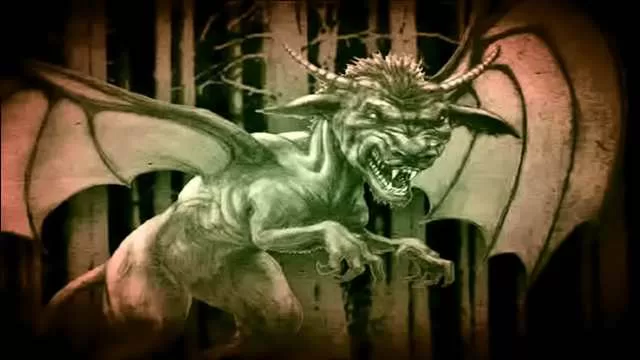Roger Vadim’s adaptation of Jean-Claude Forest
Barbarella is still a mildly entertaining film, but almost none of its punch is due to Vadim, whose direction is for the most part placid and lacks authentic style, more preoccupied with thinking up ways to leer at his then-wife Jane Fonda’s form than imbue his film with real wit and a giddy, fantastic pace. Apart from the famous opening, in which Barbarella (Fonda) performs a zero-gravity striptease, removing a heavy space suit to reveal her leggy, wavy-haired beauty, Vadim’s invention is in short supply. He leans instead on the wondrous designs by Mario Garbuglia and Uberto Campagna, which blend the super-moderne with suggestively anatomical flourishes, Jacques Fonteray’s costumes, Claude Renoir’s gaudy photography, and the other production elements. The screenplay was co-written by Terry Southern, whose novels Candy and The Magic Christian, and work on the script of Stanley Kubrick’s Dr Strangelove; or, How I Learned to Stop Worrying and Love the Bomb (1964), had helped define the satiric sensibility of the epoch. His trademark humour provides most of Barbarella’s best moments, such as when our heroine, sentenced to death in a chamber filled with birds trying to peck her to death, exclaims that “This is much too poetic a way to die!”
Barbarella, “Astro-Navigatrix” and intergalactic woman of mystery, is cruising about outer space in her swinging bachelorette pad/spaceship, when she’s assigned by the President of Earth (Claude Dauphin) to track down mad scientist Dr. Durand-Durand (Milo O’Shea), who’s absconded with his mighty super-weapon, the Positronic Ray, because he’s endangering the future universe’s pacifistic, love-exalting stability. She follows him to the planet Tao Seti, his last known whereabouts, and crash lands after her ship hits a magnetic storm that guards the planet. In quick succession, she’s captured by some feral children who torture her with flesh-eating dolls, saved by the man paid to herd the children (Ugo Tognazzi), and stumbles upon the blind, winged, angelic Pygar (John Phillip Law), who resides in a labyrinth where slaves of the Great Tyrant (Anita Pallenberg) are forced to live, some fused into the rocks as sculptures of feigned passion. The city of SoGo (“Sodom and Gomorrah”), which the Great Tyrant controls, is the abode of a culture dedicated to the gigantic mass of fluid energy underneath it, called the Matmos, which lives on negative vibes – evil – and rewards those who feed it with unlimited energy, and Barbarella and Pygar quickly find they don’t fit in.
The concept of a city engaged in a symbiosis with an entity that gorges on bad karma, requiring manifold varieties of perversion to keep it happy, seems ripe for all sorts of glorious decadence, but Barbarella shies away from anything truly confrontational and transgressive: even the inevitable sapphic flirtation that the Tyrant engages in with our heroine is alarmingly wimpy. That Barbarella won’t go for broke in living up to its own dirty mind, and yet also never bothers to try and be a convincing, exciting adventure yarn, leaves it in no-man’s-land. Vadim’s inert staging is weak in offering eroticised eye-candy, presenting clunky, static panoramas dotted with odalisques smoking “essence of man” and topless chicks dangling in bondage straps. The film’s conceptual melding of the sexual with the futuristic only comes to any kind of fruition in the scene in which Durand-Durand, who’s taken a job as the Tyrant’s Concierge whilst waiting for an opportunity to seize power, straps Barbarella into his organ-like orgasm-inducing torture device, designed to kill through pleasure, but which Barbarella’s colossal appetite overloads. The clunky special effects suggest a deliberate nod to the tackiness of old Buck Rogers serials whilst delighting in psychedelic artifice.
Still, it is a wonder that a motion picture with eight credited writing collaborators, including Vadim, Southern, and Forest, ended up feeling so light on ideas, even for a project that sets out to be perhaps more a work of installation art and a soft-core photographic spread than a narrative film. Casting it-girl Pallenberg as the Tyrant might have seemed a good idea at the time, and she certainly looks the part of a fiercely feline sadist, but she’s dubbed over by Fenella Fielding (or by Joan Greenwood, whom Fielding specialized in imitating, depending which source you read), and her role, yin to Barbarella’s yang, has visual stature but no dramatic impact. That’s also the case with Marcel Marceau as Professor Ping, a savant trapped in the labyrinth, a part making no use of his physical gifts at all. Better used, and buoying the proceedings somewhat, are Law with his radiant Aryan beauty as Pygar, O’Shea as Durand-Durand, mustering a sly blarney to make his villainy pleasantly ludicrous, and David Hemmings, in a brief cameo as Dildano, incompetent leader of a gang of rebels. Hemmings displays, at least, an expert farceur’s timing, which raises an interesting question as to why he didn’t get to play comedy more.
Fonda’s performance, radiating exactly the right mix of bewildered enthusiasm and articulate innocence, works for most of the running time in a vacuum. Whether lolling in a post-coital daze after experiencing old-fashioned sex for the first time (humans of the future have replaced it with a chemically enhanced psychic union), or tossing off post-modern asides like “That screaming! A good many dramatic situations begin with screaming!”, her Barbarella is a sketch for a great comedic heroine waiting for a better film. This film does still retain a bouncy, fun quality thanks to the better elements and the sheer visual jazziness on display, and the great music score by multiple collaborators including Marcel Magne, Bob Crewe, Charles Fox, and The Glitterhouse, alternates gorgeously kitschy pop with rich orchestral scoring. What Mario Bava, a director with a far deeper, more intuitive understanding of pop-art cinema and genre aesthetics and how to link the two, might have made of the film is pleasant to think about.



















